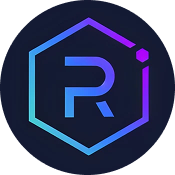In the vast universe of blockchain technology, Zilliqa and Chainlink stand out as two pioneering projects, each pushing the boundaries of what’s possible—one by tackling scalability with innovative sharding, and the other by revolutionizing how smart contracts access real-world data. While Zilliqa aims to build a high-throughput, secure platform for decentralized applications, Chainlink is the go-to oracle network that connects blockchains with external data sources, enabling a new level of smart contract functionality. For investors and enthusiasts, understanding the core differences, technological strengths, and ideal use cases of these two giants is crucial to navigating this complex ecosystem. This comparison sheds light on their architectures, use cases, and the strategic roles they play in the blockchain landscape.
Short on time? Jump to Zilliqa vs Chainlink Comparison
Understanding Zilliqa and Chainlink ?
Zilliqa was launched in 2017 as the world’s first sharded blockchain, designed to address the critical issue of scalability that hampers many blockchain platforms. Its unique approach divides the network into multiple shards, each capable of processing transactions in parallel, thereby significantly increasing throughput. Zilliqa employs its own smart contract language, Scilla, which emphasizes safety and formal verification, making it attractive for enterprise-grade dApps. The platform’s architecture ensures a balance between decentralization, security, and scalability, setting a strong foundation for high-performance decentralized applications.
Chainlink, on the other hand, was founded in 2017 as an decentralized oracle network aimed at bridging the gap between smart contracts and real-world data. It provides secure, reliable data feeds, APIs, and off-chain computations that enable smart contracts to interact with external systems. Chainlink’s architecture is built around a network of oracles—independent nodes that fetch and verify data—ensuring decentralization and tamper-resistance. Its widespread adoption across various blockchains and industries makes Chainlink a vital infrastructure component in the blockchain ecosystem.
While Zilliqa is primarily focused on creating a scalable and secure blockchain platform for application development, Chainlink’s core mission is to enhance smart contract functionality through reliable data connectivity. Both projects emphasize security, but their approaches differ—Zilliqa via its peer-reviewed language and sharding, and Chainlink through its decentralized oracle network. Their development trajectories reflect distinct strategic goals: Zilliqa aims to be a high-throughput platform, whereas Chainlink aims to be an essential bridge connecting blockchains with external data and systems.
Understanding these differences is crucial for investors looking to leverage blockchain technology’s full potential. Zilliqa’s focus on scalability makes it ideal for high-volume dApps and enterprise solutions, while Chainlink’s versatility and wide adoption position it as a backbone for DeFi, insurance, and cross-chain interoperability. This comparative analysis explores their architectures, use cases, and strategic implications, helping enthusiasts and investors make informed decisions.
Key Differences Between Zilliqa and Chainlink
Core Functionality
- Zilliqa: Zilliqa is a blockchain platform focused on scalability and secure smart contract execution, utilizing sharding to increase transaction throughput linearly as the network grows. It aims to support high-performance decentralized applications with low fees and fast finality, making it suitable for enterprise-grade solutions.
- Chainlink: Chainlink is an decentralized oracle network designed to connect smart contracts with external data, APIs, and off-chain systems. Its primary function is to provide secure, tamper-proof data feeds that enable complex, data-dependent smart contracts across multiple blockchains.
Technology Approach
- Zilliqa: Zilliqa employs a pioneering sharding architecture combined with its own smart contract language, Scilla, which emphasizes formal verification and security. Its network architecture includes multiple shards processing transactions concurrently, ensuring high throughput and scalability.
- Chainlink: Chainlink utilizes a decentralized network of oracles that operate off-chain to fetch, verify, and deliver data to blockchains. Its architecture is based on multiple independent oracle nodes that aggregate and validate data, ensuring reliability and decentralization.
Primary Use Cases
- Zilliqa: Zilliqa is tailored for high-throughput decentralized applications, enterprise solutions, and micro-payments, leveraging its scalable platform to support complex dApps requiring fast finality and low fees.
- Chainlink: Chainlink is integral to DeFi, insurance, cross-chain interoperability, and any application requiring external data, serving as a reliable bridge that enhances smart contract capabilities in a secure manner.
Development Focus
- Zilliqa: Zilliqa’s development emphasizes scalability, security, and ease of smart contract development with its formal verification language, targeting developers building large-scale applications.
- Chainlink: Chainlink focuses on expanding its oracle network, increasing data sources, and enhancing cross-chain interoperability, aiming to become the backbone infrastructure for data in blockchain ecosystems.
Market Adoption
- Zilliqa: Zilliqa has gained traction with enterprise clients and developers interested in scalable blockchain solutions, with a growing ecosystem of dApps and DeFi projects utilizing its platform.
- Chainlink: Chainlink boasts widespread adoption across DeFi platforms, multiple blockchains, and enterprise solutions, establishing itself as a critical infrastructure component for reliable data feeds.
Zilliqa vs Chainlink Comparison
| Feature | ✅ Zilliqa | ✅ Chainlink |
|---|---|---|
| Launch Year | 2017 | 2017 |
| Primary Focus | Scalability & Secure Smart Contracts | Decentralized Oracles & Data Connectivity |
| Consensus Mechanism | pBFT with Sharding | Multiple Oracle Nodes & Incentives |
| Smart Contract Language | Scilla | Various (Ethereum, Solidity, etc.) |
| Main Use Cases | High-performance dApps, Enterprise Solutions | DeFi, Cross-chain, Data Feeds |
| Transaction Speed | Over 2,800 TPS (experimental) | Dependent on blockchain (e.g., Ethereum, Binance Smart Chain) |
Ideal For
Choose Zilliqa: Developers and enterprises seeking scalable and secure blockchain platforms for decentralized apps.
Choose Chainlink: DeFi projects, cross-chain solutions, and applications requiring reliable off-chain data integration.
Conclusion: Zilliqa vs Chainlink
Zilliqa and Chainlink serve distinct yet complementary roles within the blockchain ecosystem. Zilliqa’s innovative sharding architecture positions it as a highly scalable platform for decentralized applications that demand high throughput and security. Its focus on formal verification with Scilla makes it particularly appealing for enterprise-grade solutions where safety is paramount. Conversely, Chainlink acts as the vital data conduit, enabling smart contracts to securely interact with real-world information, which is essential for DeFi, insurance, and cross-chain interoperability. Its widespread adoption and extensive data sources have established it as a cornerstone infrastructure for modern blockchain applications.
Choosing between them depends on your project’s needs—whether you require a scalable blockchain platform or robust external data connectivity. For developers building high-volume dApps, Zilliqa offers a promising foundation. For those developing data-dependent smart contracts, Chainlink provides the reliable, decentralized oracle network necessary to unlock their full potential. Both projects exemplify innovation in their respective domains, shaping the future of blockchain technology.






